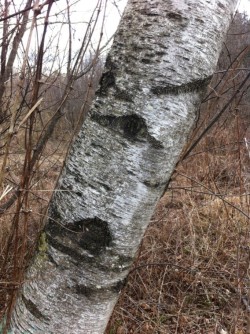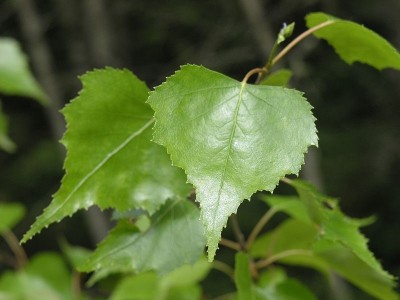Can new ecosystems develop in metal contaminated soils?by Robin Brouat and Théo Garcia
Published by the December 2, 2019 on 1:38 PM
A recent study revealed that gray birch has interesting characteristics in ecological restoration, which allow the tree to support high metal contaminated soils.
What is the experiment?
Whereas the majority of scientists were kept in their laboratory testing contaminant, a group of American biologists performed an experiment in the field, a full-scale exercise. In Jersey City, they measured a lot of photosynthetic parameters, in gray birch (Betulia populifolia) in two different conditions in Liberty State Park: One with High trace Metal Loads (HML) and the second with Low trace Metal Loads (LML). It results that none measured biophysical parameters vary. The only parameter that varied significantly was the leaf mass per area which decreased when the tree was in contaminated soil. This result can have two main explications. The first is that photosynthesis will no longer be affiliated with leaves but with other organs such as roots. The second is the fact that the tree will renew its leaves more often and this will impact its growth rate.

Photo by Charlie Hohn
Photograph by Richtid
What is the link with ecological restoration?
Gray birch can capture trace metals through their leaves and roots. This allows partial decontamination of areas polluted by heavy metals. Nevertheless, it is necessary to seed the plots after contamination so that only trees with a genotype with a high tolerance for trace metal concentrations grow. However, this decontamination by trees will not be possible anywhere in the world because trees are less efficient to get trace metals pollution in areas of high temperature and drought.
It’s wonderful, but where is the new ecosystem promised?
Yes, we are coming here. We can see an ecosystem like a pyramid with at its base the plants (also called primary producer) which convert the solar energy in organic matter for the higher steps of the trophic chain. In the study, the scientists explain that the diminution of leaf mass per area in HML affects the energy in entrance to the ecosystem. If less energy enters in the ecosystem, the whole ecosystem will be affected.
Pretty cool! So what species could we find here?
In theory this will be happened. But in practice, it could be quite different. Indeed, the diminution of Leaf Mass per Area is significantly, but does it could have a really impact on the ecosystem? The diminution it’s approximately 10g.m-2 and it’s not very well documented in the paper how this diminution could have an impact. In addition, we have just information about one species of primary producer; in a temperate forest we can found several tens of species which can do photosynthesis housing an animal diversity. For having a better idea of what kind of forestall ecosystem we can obtain, it seems better study the whole vegetal community of the site, and not simply a unique species.
Hum, so this forest is not different than another one… So bad…
Nevertheless, this study is interesting, and allows us to see the adaptation capacity of a specific tree to contaminated conditions. The gray birch is commonly used in ecological restoration, and the study proves that the species is robust for this type of projects. In the future, it will be frequent to walk in a forest, in a place in which in the past there was an industrial zone, without realizing the past of this forest. When local people will tell you that, before, there were factories. You will see the forest with a different way. And for this it will be a different forest for you. And it’s the more important.

This post is licensed under a Creative Commons Attribution-ShareAlike 4.0 International License.





